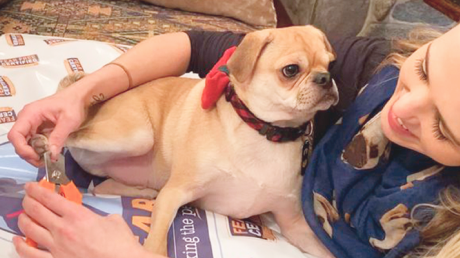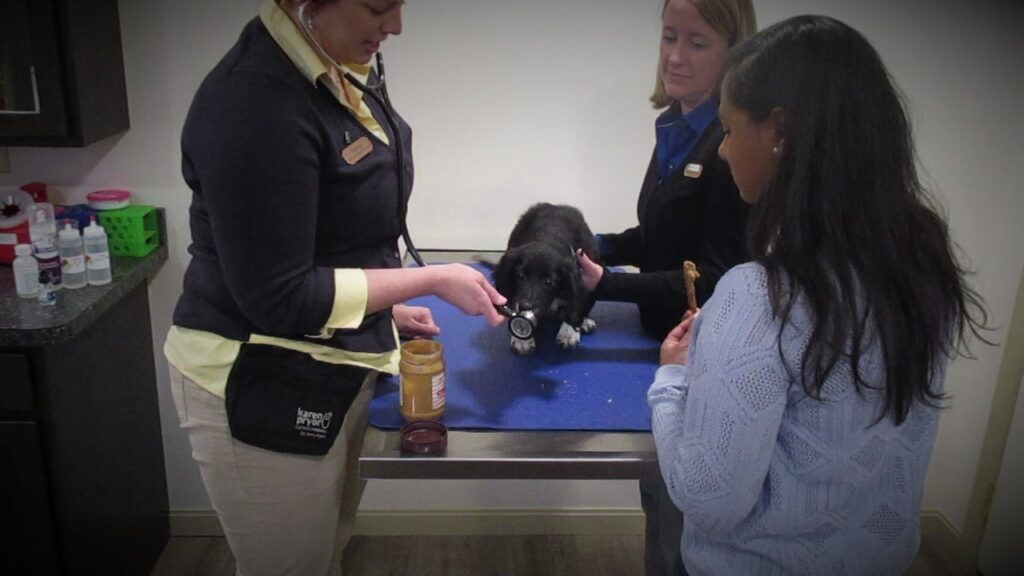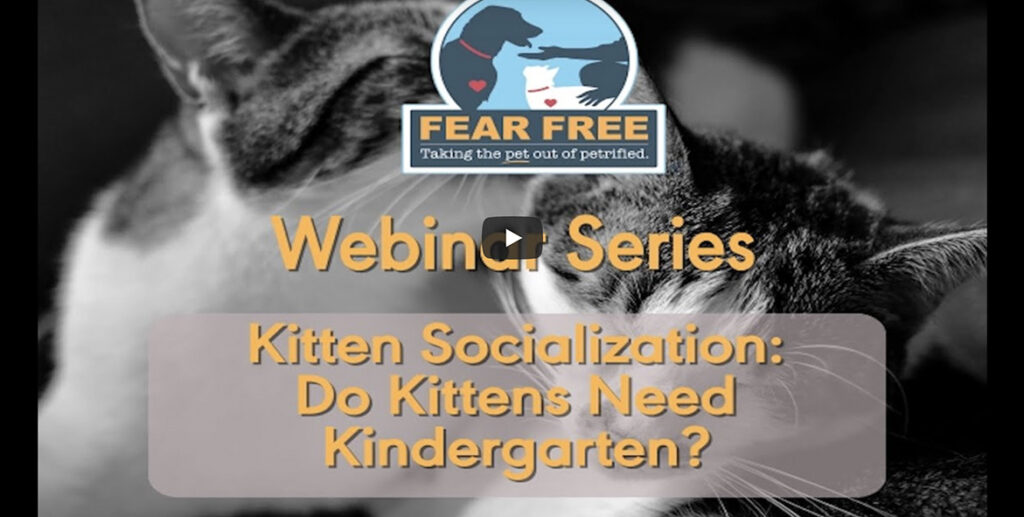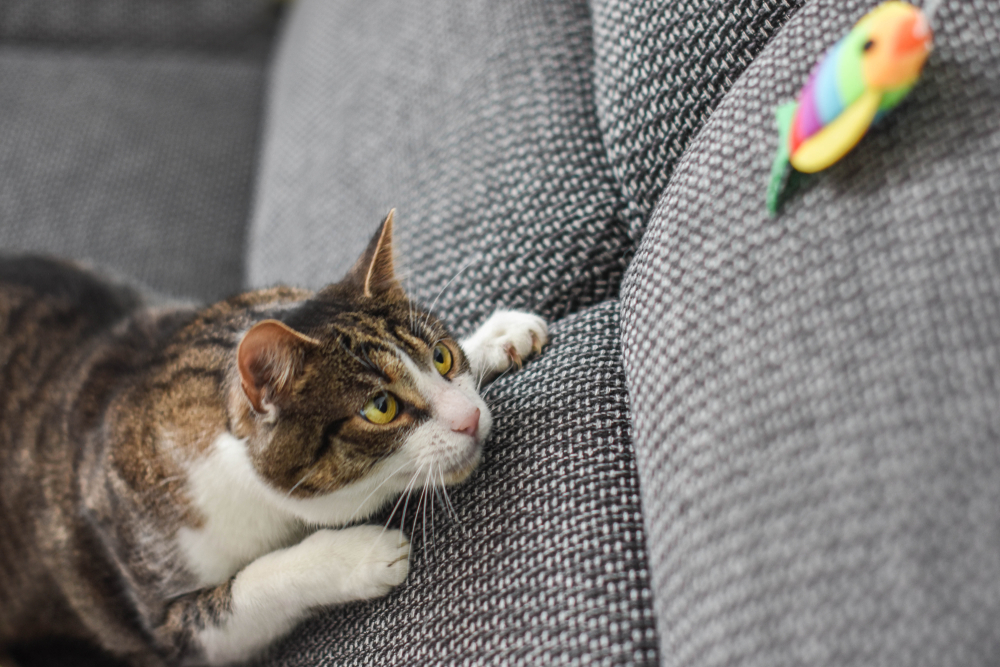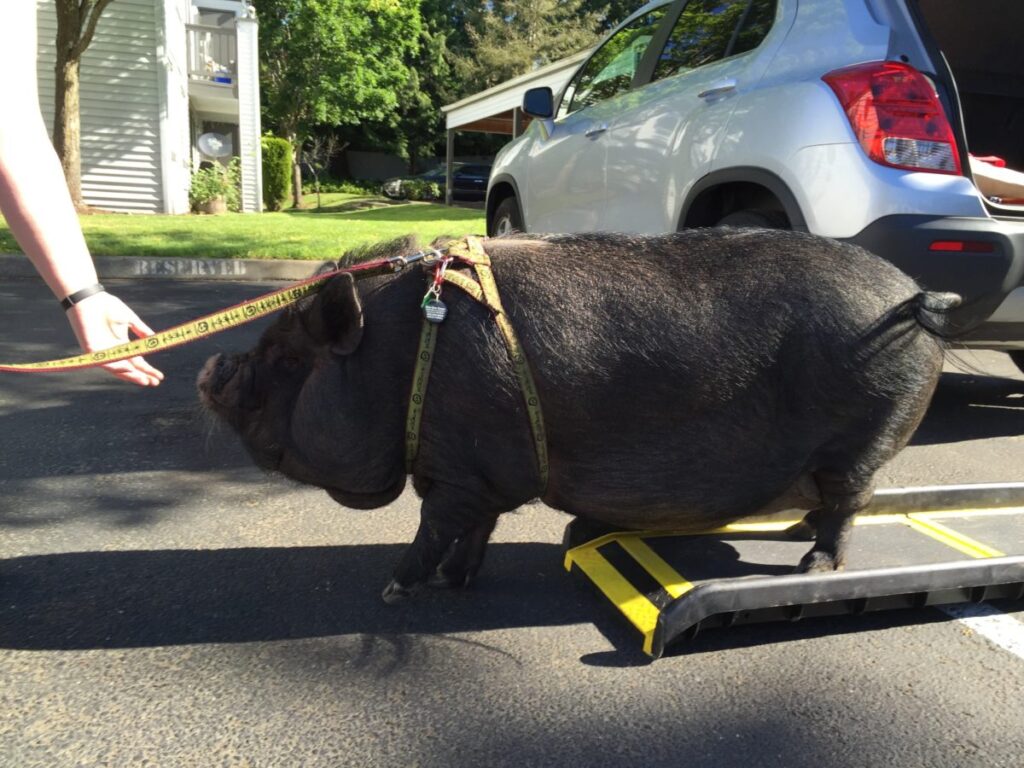
Unfortunately, our patients don’t always understand that. Most of our patients are not overjoyed about their trip to the veterinary practice. Even though we are here to help them live long, healthy, happy lives, they see our clinic as the place where they may be poked, touched inappropriately, and sometimes scared, even if this is not our intention.
Wouldn’t it be fantastic if we could communicate with our patients the way we can with humans? If they had the opportunity to say “Yes” or “No” to being injected or touched before resorting to a growl, bite, or air snap? Teaching strong stationary behaviors and using them as a consent cue can be useful and can take your veterinary team to the next level.
Stationary Behaviors
These behaviors cue the animal to stand, lie down, or touch a body part to a specific location for a duration of time. They are typically taught outside the veterinary setting using marker training and shaping techniques*. Once the patient is comfortable performing the stationary behavior in a non-stressful setting, training sessions can begin to take place at the veterinary practice. The patient should enjoy training and interacting with the stationary behavior as this is the place where most veterinary husbandry behaviors will be performed in the future. The patient should associate this location with reinforcements such as high-value food and fun. Stationing behaviors include but are not limited to the following:
- Body Target to Mat
- Four paws on the Mat
- Lying in Sternal Recumbency on the Mat
- Lying in Lateral Recumbency on the Mat
- Nose Target to a Hand or Object
- Chin Rest
- Paw Target to an Object
What Is Consent?
Once the above behaviors have been taught and the patient is 100 percent responsive in the veterinary practice, the concept of consent can begin. Consent allows the patient to choose to engage in training with the owner and veterinary team members by responding to the cued behavior and allowing the procedure to be performed. If the patient does not want to interact, they will send a clear signal that they are uncomfortable and are unable to perform the stationary behavior at the given time.
The goal with consent is to give patients some control by allowing them to make choices to reduce fear, anxiety, and stress, increase comfort, and increase the animal’s ability to cooperate. It is important to fully understand the patient’s body language and to understand that not responding to the cued behavior is not the patient being “stubborn.” If the patient is reluctant to stay in the cued stationary behavior, assess the patient and yourself, and then end the training session or veterinary visit. Remember that animals use avoidance behaviors such as displacement or conflict when a situation becomes stressful. Our goal is to give the animal a choice and to respect that choice.
Examples of avoidance behaviors:
- Sniffing the ground
- Not responding to a well-known station behavior
- Yawning
- Lip licking
- Slow response to a station behavior
- Head turning away
- Weight shifting away
Final Note
If taught correctly, stationary behaviors can be an asset to any veterinary team. Any veterinary team member who is interested in teaching these protocols should consider training the patient ahead of time to wear a basket muzzle as we are teaching voluntary veterinary care. The patient can and will still say that they are uncomfortable if they are pushed too far above their comfort level. A veterinary team member should be well educated in canine and feline body language before working on these procedures. The best resource for fully teaching these behaviors is the text “Cooperative Veterinary Care” by Alicea Howell and Monique Feyrecilde, published by Wiley Blackwell.
*Shaping will be discussed in Part Two
This article was reviewed/edited by board-certified veterinary behaviorist Dr. Kenneth Martin and/or veterinary technician specialist in behavior Debbie Martin, LVT.
